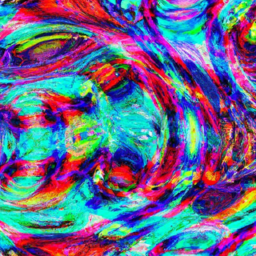Website Design: Balancing Aesthetics and Functionality
In today’s digital era, having a visually stunning and user-friendly website is crucial for businesses and individuals to succeed online. A well-designed website that balances aesthetics and functionality can attract visitors, keep them engaged, and ultimately convert them into customers. But how do you strike a perfect balance between the two? Let’s explore some tips and tricks to create a website that is both visually appealing and highly functional.
Understanding the Basics
Before we delve into the details, let’s clarify what we mean by aesthetics and functionality in web design. Aesthetics refers to the visual appeal of a website, including its layout, color scheme, graphics, and typography. It’s all about making a first impression and creating a visually pleasing experience. On the other hand, functionality focuses on the practical aspects of a website. It involves how easily users can navigate through the site, find information, and perform various actions like filling out forms or making purchases.
1. Simplicity is Key
When it comes to balancing aesthetics and functionality, simplicity is key. A cluttered and complicated website can overwhelm visitors and drive them away. Aim for a clean and organized design that allows users to easily find what they are looking for. Use white space to create breathing room and highlight important elements. A simple layout and navigation structure will enhance the functionality of your website while maintaining visual appeal.
2. Responsive Design
With the increasing use of mobile devices, having a responsive website is no longer optional. Responsive design ensures that your website looks great and functions effectively on all screen sizes, whether it’s a desktop, tablet, or smartphone. Aesthetically, a responsive design ensures that your website adapts to different devices seamlessly. It also enhances functionality by providing an optimal user experience regardless of the device being used.
3. Color and Typography
Colors and typography play a significant role in the overall aesthetics of a website. Choose a color scheme that aligns with your brand identity and conveys the right emotions. Use contrasting colors to make important elements stand out, such as call-to-action buttons. Similarly, select fonts that are not only visually appealing but also legible across different devices and screen sizes.
4. Clear Navigation
Navigation is a critical aspect of website functionality. A well-designed navigation menu allows users to quickly and easily find the information they are looking for. Use clear and concise labels for your menu items and ensure that the navigation structure is logical and intuitive. A user-friendly navigation system improves the functionality of your website and prevents frustration among users.
5. Visual Hierarchy
Visual hierarchy refers to the organization and arrangement of elements on a webpage to guide users’ attention. Use visual cues such as size, color, and placement to draw attention to important content and guide users through the page. This technique enhances both aesthetics and functionality by creating a visually engaging experience while helping users understand the website’s structure and navigate efficiently.
6. Optimization for Speed
Nobody likes a slow-loading website. Speed is a crucial factor in both aesthetics and functionality. A slow website can frustrate users, leading them to leave and never return. Optimize your website’s loading speed by compressing images, minifying code, and leveraging caching techniques. A fast website not only provides a better user experience but also improves your search engine rankings.
Conclusion
Finding the right balance between aesthetics and functionality is essential for creating a successful website. A well-designed website enhances user experience, captures attention, and builds credibility. By simplifying your design, embracing responsive design, choosing the right colors and typography, optimizing navigation, implementing visual hierarchy, and focusing on speed, you can create a website that is both visually appealing and highly functional. Remember, a beautiful website is great, but a beautiful and functional website is even better.


